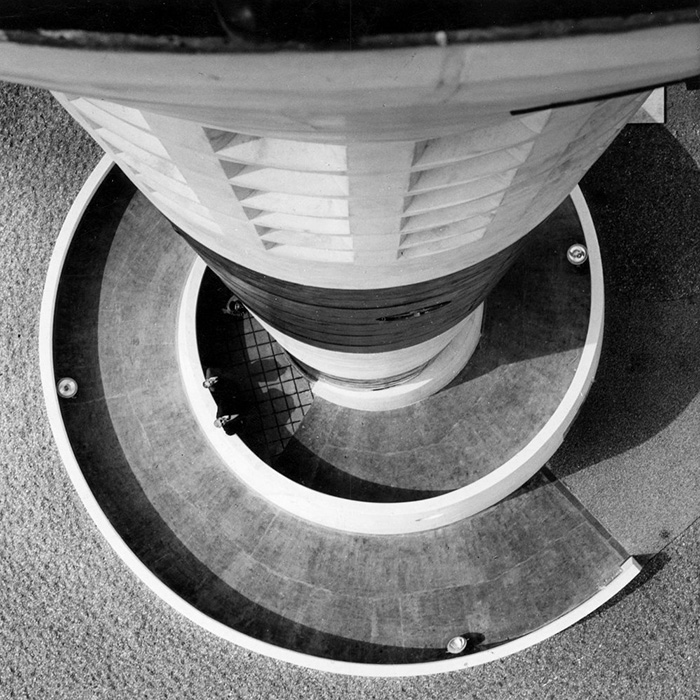Inspired by Processcraft’s installation The Lookout for our new exhibition Making It Happen, we explore lighthouses in the RIBA Collections. You can browse and buy more images on our online image library, RIBApix.
The view in architect Sydney Smirke’s drawing of Genoa lighthouse guarding the promontory of San Benigno would be unrecognisable to him two centuries later with the modern port now completely surrounding ‘La Lanterna’. Constructed in 1543 on the site of an earlier lighthouse dating from 1128, it is a square tower of rendered brick, today much repaired and rebuilt due to war damage and lightning strikes. Not only is it the tallest masonry lighthouse (tower height 77m), but one of the very oldest still in use today and a proud symbol of Genoa - with the city’s coat of arms painted on the lower part of the tower.
The lamps were originally fuelled by olive oil until replaced by acetylene gas at the end of the 19th century and today they are powered by electricity. Henry Parke’s 1822 sketch plan of the lamp floor shows the lenses and reflectors.
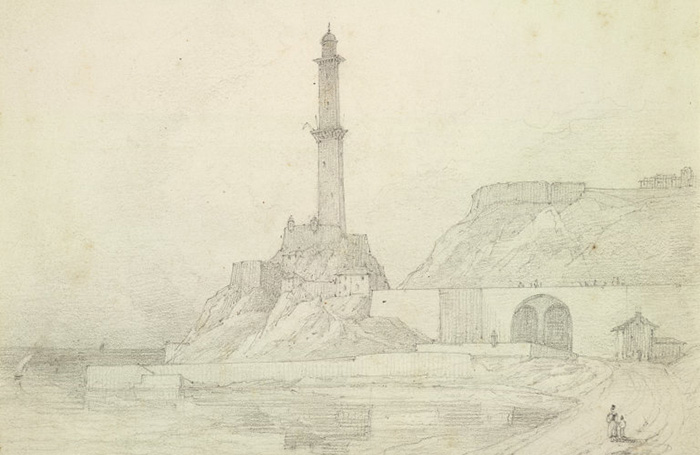
Perhaps the best known and influential navigational marker is that at Eddystone Rocks, an extensive reef to the south west of the important naval port of Plymouth. Towards the end of the 17th century Trinity House, who were responsible for the provision of navigational aids and lighthouses, faced demands to better protect the rapidly growing Atlantic sea trade. The challenge of building the world’s first offshore ‘rock light’ on Eddystone Rocks was taken on by the artist and engineer Henry Winstanley, who had previously lost merchant vessels against the reef. It was completed in 1698 after two years of construction in treacherous conditions. The stone drum base of Winstanley’s lighthouse was anchored to the rocks by twelve iron stanchions and was further strengthened in the summer of 1699, taking the form illustrated in the above left engraving. For five years no further ships were lost, but sadly in the Great Storm of 1703 the lighthouse was swept away, taking Winstanley with it.
By 1709 a replacement stone and timber tower had been built, which lasted until 1755, when it was burned down by a fire, which had begun in the wooden lantern. Construction of the third lighthouse was entrusted to the civil engineer John Smeaton, whose innovations established the basis of the design of many future lighthouses. Fulfilling the need to withstand the huge forces of wind and waves, as well as being a waterproof structure, Smeaton devised an almost monolithic structure of 1493 interlocking, dovetailed granite blocks weighing nearly 1000 tons, which gripped more tightly the harder the seas pounded. Completed in 1759, it was tapered to provide a lower centre of gravity and circular in cross section to lessen wind and wave resistance. Due to erosion of the underlying rock, this lighthouse was replaced in 1882 by a much larger lighthouse still in use today and the top part of the tower removed and rebuilt at Plymouth Sound as a monument to John Smeaton, Smeaton’s Tower (below right).
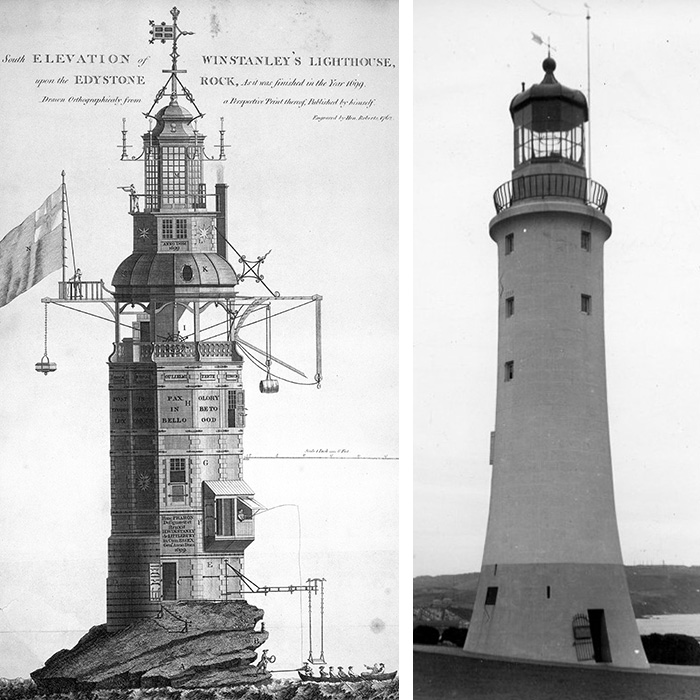
At the entrance to the River Esk stands Whitby's Georgian lighthouse, built in 1831 by the Whitby Harbour Trustees’ engineer, Francis Pickernell. It is a 21m fluted stone Doric column topped with an octagonal, white lantern, which ceased to be used for navigation in 1914. On the opposite side of the mouth of the Esk is Pickernell’s much more plain, squat East Pier lighthouse of 1854, both of which can be seen in this view of Whitby.
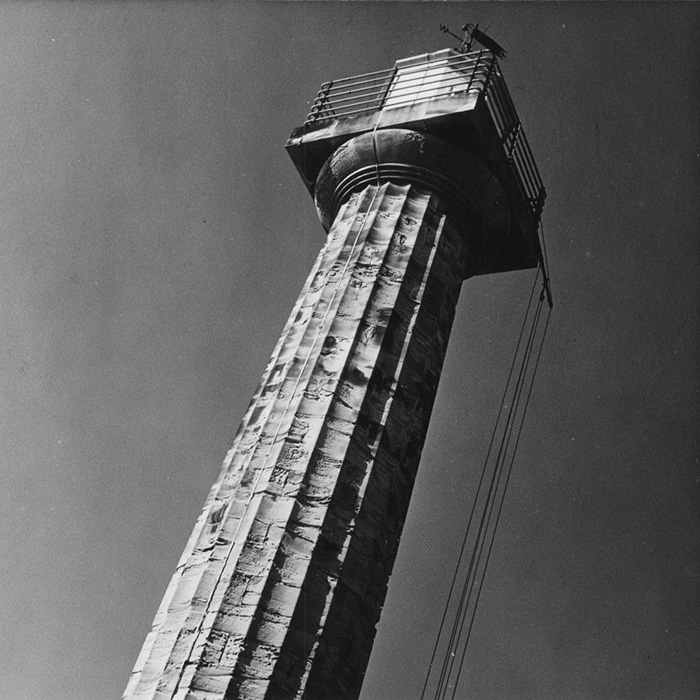
Contemporary with Whitby’s West Pier, is this ‘low light’ at Burnham-on-Sea, erected in 1832 as a navigational aid to guide ships approaching Bridgwater harbour through dangerous mudflats - it is still in use today. Known locally as the “lighthouse on legs”, it is 11m high comprising an enclosed, white, weatherboarded wooden cabin and lantern on nine wooden piers, some now with metal reinforcement. Particularly striking on the opposite, seaward side of the building to this image is a large red vertical stripe.
Unlike the stereotypical tall, round, tapering lighthouse, the Low Lighthouse exemplifies the huge variety of lighthouses and navigational aids including the harbour light at Fowey; the pyramidal lighthouse at Sjotorp, Sweden; the tiny lighthouse at Glasson Dock and the cast iron ‘low light’ at Dovercourt.
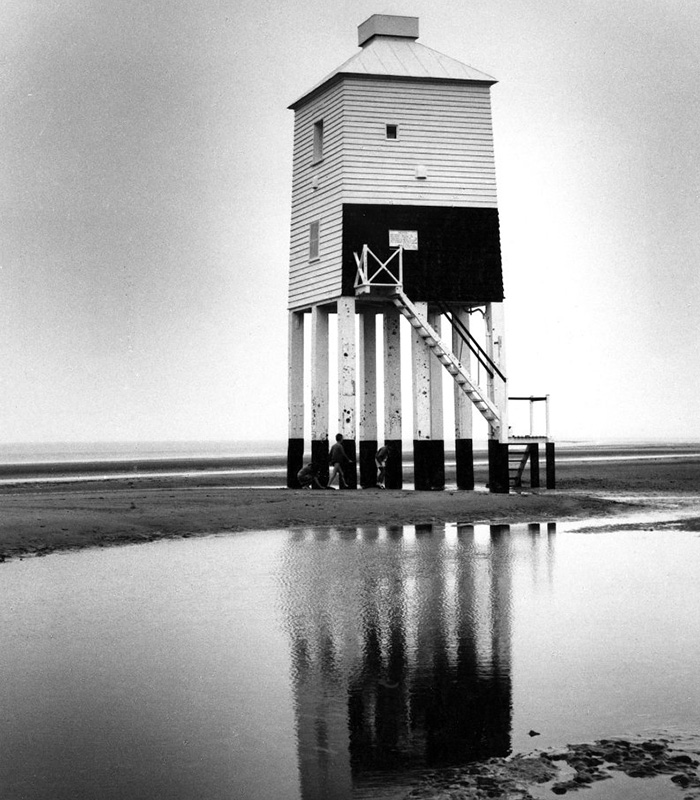
Perhaps better known for Vickers House (now Millbank Tower), the firm of Ronald Ward & Partners designed this new lighthouse (1960) on the shingle of otherworldly Dungeness to replace the existing 1904 lighthouse about to be obscured by the construction of the new nuclear power station.
The first major lighthouse to be built in Britain for 50 years, it was - by virtue of modern construction methods using precast reinforced concrete hoops - much more slender and stronger compared to the earlier lighthouse. It lacks the traditional taper, but is flared at the top and sits on a distinctive spiral ramp, which forms part of the structure. Note the black and white bands for visibility with the concrete being impregnated with colour rather than being painted, the six rows of square shaped apertures concealing the loudspeakers of the fog-warning equipment and the internal, cantilevered spiral staircase.
This, the fifth ‘high’ (43m) lighthouse at Dungeness was highly regarded as an example of good functional design, being described in the Architectural Review (September 1960) as having a "high degree of sophistication with a degree of visual appropriateness comparable to the best work of the past." It was listed grade II* in 2003.
Visit RIBApix to browse over 100,000 photographs and drawings from the RIBA Collections, available to buy as art prints for your home or image licences for your research.
